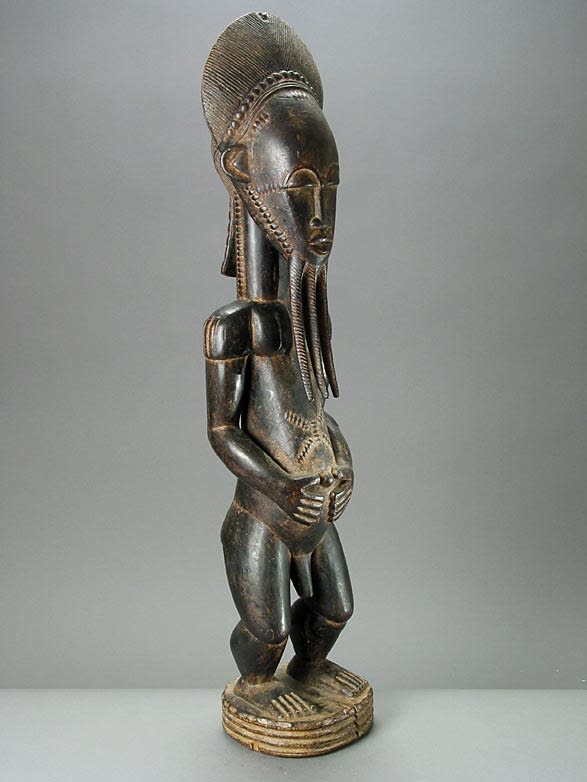Baule Wooden Sculpture of a Man, 20th Century CE
Wood
76.2 x 15.9 cm
30 x 6 1/4 in
30 x 6 1/4 in
PF.5739
Further images
This sculpture probably represents a spouse from the spirit world, called a Blolo Blian (Blolo Bla if feminine). Baule people believed that every person has such a spouse. It manifests...
This sculpture probably represents a spouse from the spirit world, called a Blolo Blian (Blolo Bla if feminine). Baule people believed that every person has such a spouse. It manifests itself through a series of dreams, usually sexual in nature, and is believed to be responsible for practical and spiritual problems that arise in the life of that individual. Once carved under the direction of a village diviner, the statue is kept in the person’s room and is offered food. Moreover, it is rubbed against the owner’s skin, often giving it a shiny patina. Also possible, this statue might represent an Asie Usu figure. The Asie Usu spirits lived in the countryside. They are mischievous; but, if properly honored, will grant fruitful harvest and hunts. They sometimes express desire, through the village diviner, to be associated with a specific person. A statue is then sculpted and worshipped in the house of the designated individual, and it is often given a libation of chicken blood and egg, often giving it an encrusted patina. He rests both his hands on his belly next to his protruding navel. He stands with his legs spread apart and knees slightly bent. Raised decorative scarification is prevalent, especially along the front back of his torso, on the sides of his neck, and on his temples and jaw. His facial features, including his arching brows that merge into a T-shaped nose, semi-circular eyes, and pointed chin, are also characteristic of the Baule style. The figure wears an elaborate coiffure that has been woven into a braided ponytail echoing his beard, wound into three strands. This represents an idealized form of Baule spiritual masculinity. The attention to details, most evident in the hair and raised scars, is masterful. Clearly this sculpture is the work of an expert.





